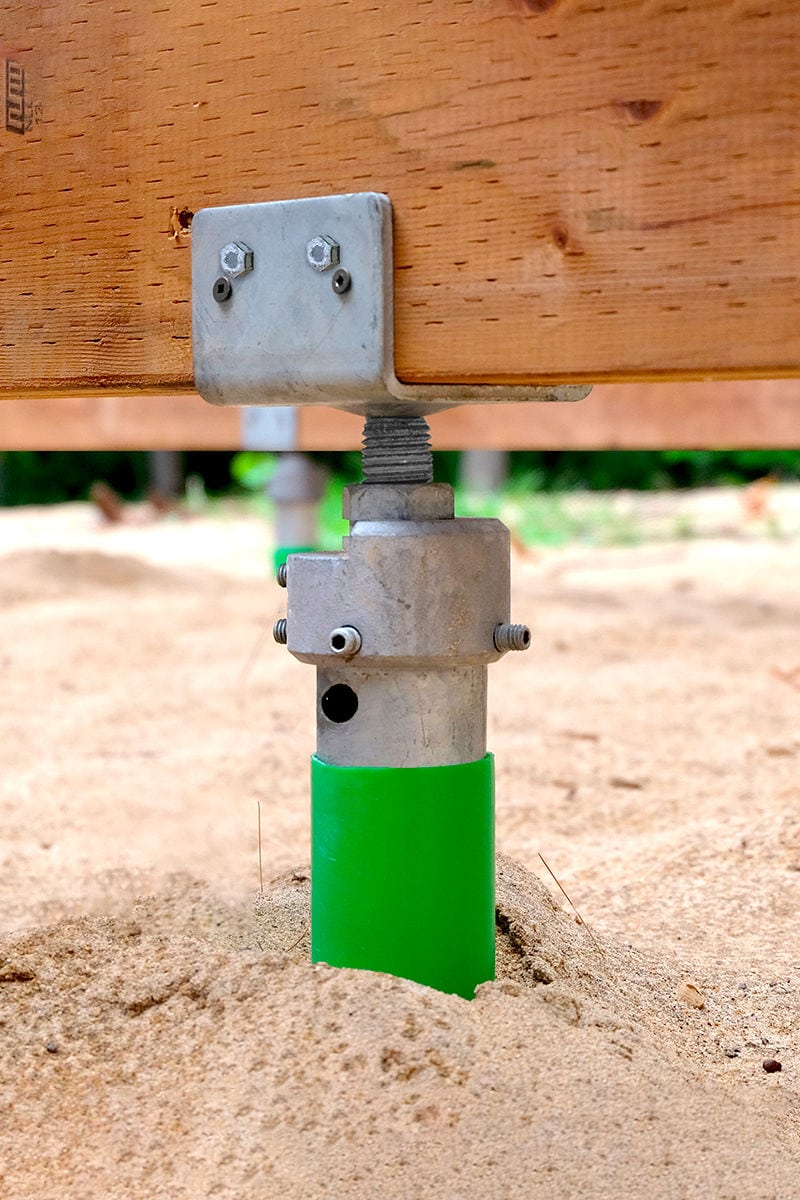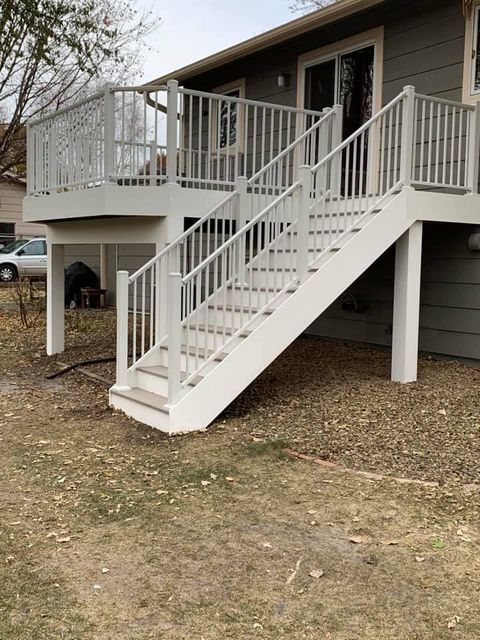Deck Footings Demystified: Your Blueprint for a Safe, Lasting Outdoor Sanctuary
Deck Footings Demystified: Your Blueprint for a Safe, Lasting Outdoor Sanctuary
Blog Article
Selecting the Right Deck Footings for Security and Longevity
The durability and security of your deck depend greatly on the kind of grounds you pick, as they offer the essential support and security to endure the examination of time. In this discussion, we will certainly explore the various kinds of deck grounds, consider the essential variables to weigh when making a decision, and dig right into the pros and disadvantages of various choices.
Kinds of Deck Footings
There are a number of kinds of deck grounds that can be made use of, each offering unique advantages and considerations. One typical type of footing is the concrete pier ground. These footings consist of a cylindrical opening loaded with concrete, which supplies a solid structure for the deck articles. Concrete pier footings are relatively simple to install and supply excellent security, making them a popular option for several deck jobs.
These grounds are set up by screwing them into the ground, which develops a safe foundation for the deck. They also permit for simple adjustment and progressing of the deck if needed.
Conversely, some building contractors choose for precast concrete footings. These grounds are made of sturdy concrete and can be found in different sizes and shapes to fit different deck designs. Precast concrete grounds are convenient to mount and offer a secure base for the deck structure.
Ultimately, one more alternative is the post-in-anchor ground system. This type of footing includes driving a metal anchor right into the ground and attaching it to the deck blog post. It provides flexibility in terms of placing the deck messages and is ideal for decks with lightweight frameworks.
When selecting the appropriate kind of deck ground, it is vital to take into consideration aspects such as dirt conditions, deck tons, and local building regulations (Deck Footings). Consulting with a specialist contractor or structural designer can aid guarantee the suitable ground is chosen for a risk-free and secure deck
Aspects to Consider When Choosing Grounds
When picking the appropriate footings for a deck, it is vital to carefully consider different variables such as dirt problems, deck load, and adherence to local building regulations. These aspects play a substantial duty in ensuring the stability and toughness of the deck framework.
The type of soil on which the deck will be built identifies the kind of grounds required. On the various other hand, decks developed on clay or expansive soils might need grounds that can fit the dirt's tendency to broaden and agreement.
Another crucial factor is the deck load. The weight of the deck, consisting of the products used and any potential online loads such as furnishings or celebrations, should be thought about when picking grounds. The footings have to be created to bear the weight of the deck and disperse it uniformly to prevent any type of architectural issues or failings.
Lastly, adherence to regional building regulations is vital. Building codes differ from region to area, and it is important to abide with the details demands set by the regional authorities. Deck Footings. These codes make certain that the deck is built securely and satisfies the necessary criteria for architectural stability and load-bearing capability
Concrete Footings: Benefits And Drawbacks

Concrete grounds use a number of advantages and drawbacks when made use of as the structure for a deck. On the silver lining, concrete footings offer excellent stability and toughness. Concrete is a stiff and solid product that can support heavy lots and endure various weather problems. It likewise has a long life-span, making it a reputable choice for long-lasting use.
An additional advantage of concrete footings is their convenience. They can be poured into various sizes and shapes to accommodate numerous deck styles and configurations. Concrete grounds can be tailored to fit the certain requirements and demands of the deck structure.
However, there are also some disadvantages to utilizing concrete grounds. One major downside is the price and labor associated with their installment. Concrete footings call for excavation and often need the support of heavy machinery. This can increase the overall expense of the deck project and might call for professional support.

Helical Piers Vs. Sonotubes: Which Is Better?
In taking into consideration the foundation alternatives for a deck, the comparison in between helical piers and sonotubes is essential in figuring out the premium selection. They are turned right into the ground utilizing hydraulic equipment, supplying a durable and stable structure for the deck.
When it comes to security and toughness, helical piers have the top hand. The helical plates on the piers create a strong hold with the dirt, protecting against any activity or shifting of the deck. This is particularly helpful in locations with unpredictable or moving dirt conditions. Sonotubes, on the various other hand, count exclusively on the concrete filling up for security, which may not supply the very same level of stamina and resistance.
In regards to installment, helical piers are reasonably easier and faster to mount contrasted to sonotubes. The hydraulic machinery utilized to twist the piers into the ground ensures a efficient and quick procedure. Sonotubes, on the various other hand, click to investigate require digging holes and pouring concrete, which can be labor-intensive and time-consuming.
Additionally, helical piers are a more versatile alternative. They can be used in various soil conditions and can be adjusted or strengthened if required. Sonotubes, on the other hand, may require additional support, such as rebar, in particular dirt problems or areas with high lots demands.
Picking the Right Footings for Your Deck's Dimensions
For ideal architectural honesty, it is important to carefully choose the ideal footings that align with the dimensions of your deck. The measurements of your deck, including its size, size, and height, play a substantial role in establishing the kind and size of footings needed.
When choosing grounds for your deck, it is essential to think about the load-bearing ability of the dirt. The weight of the deck, integrated with the weight of any furniture or people on it, puts in a significant pressure on the footings (Deck Footings). It is crucial to pick footings that can adequately support this weight without sinking or shifting over time.
The size and shape of the grounds must likewise be considered. Larger decks with better measurements call for larger footings to provide adequate stability and assistance. The shape of the grounds, whether they are square or rounded, depends on the style and format of the deck. In addition, the deepness at which the footings are set up need to be determined based upon view it the frost line in your region to stop any type of heaving or shifting as a result of freezing temperatures.
Verdict
In conclusion, picking the ideal deck grounds is essential for making sure stability and resilience. Factors such as the type of grounds, the deck's measurements, and the pros and disadvantages of various choices must be taken into consideration.
These footings are composed of a round opening filled up with concrete, which offers a strong foundation for the deck posts. Concrete pier grounds are relatively very easy to set up and offer excellent security, making them a popular Clicking Here option for numerous deck jobs.
Precast concrete grounds are hassle-free to set up and provide a steady base for the deck framework.
It offers versatility in terms of placing the deck blog posts and is ideal for decks with light-weight frameworks.
Concrete grounds use several advantages and disadvantages when used as the structure for a deck.
Report this page